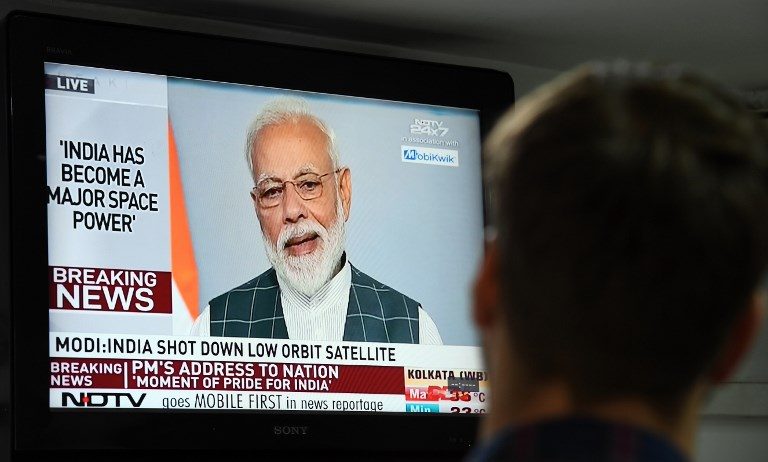SUMMARY
This is AI generated summarization, which may have errors. For context, always refer to the full article.

Washington DC, USA – The head of NASA on Monday, April 1, branded India’s destruction of one of its satellites a “terrible thing” that had created 400 pieces of orbital debris and led to new dangers for astronauts aboard the International Space Station.
Jim Bridenstine was addressing employees of the National Aeronautics and Space Administration 5 days after India shot down a low-orbiting satellite in a missile test to prove it was among the world’s advanced space powers. (READ: Modi declares India ‘space superpower’ as satellite downed by missile)
Not all of the pieces were big enough to track, Bridenstine explained. “What we are tracking right now, objects big enough to track – we’re talking about 10 centimeters (6 inches) or bigger – about 60 pieces have been tracked.”
The Indian satellite was destroyed at a relatively low altitude of 180 miles (300 kilometers), well below the ISS and most satellites in orbit.
But 24 of the pieces “are going above the apogee of the International Space Station,” said Bridenstine.
“That is a terrible, terrible thing to create an event that sends debris at an apogee that goes above the International Space Station,” he continued.
“That kind of activity is not compatible with the future of human spaceflight. It’s unacceptable and NASA needs to be very clear about what its impact to us is,” he added.
The US military tracks objects in space to predict the collision risk for the ISS and for satellites. They are currently tracking 23,000 objects larger than 10 centimeters.
That includes about 10,000 pieces of space debris, of which nearly 3,000 were created by a single event: a Chinese anti-satellite test in 2007 at 530 miles from the surface.
As a result of the Indian test, the risk of collision with the ISS has increased by 44% over 10 days, Bridenstine said.
But the risk will dissipate over time as much of the debris will burn up as it enters the atmosphere. – Rappler.com
Add a comment
How does this make you feel?
There are no comments yet. Add your comment to start the conversation.